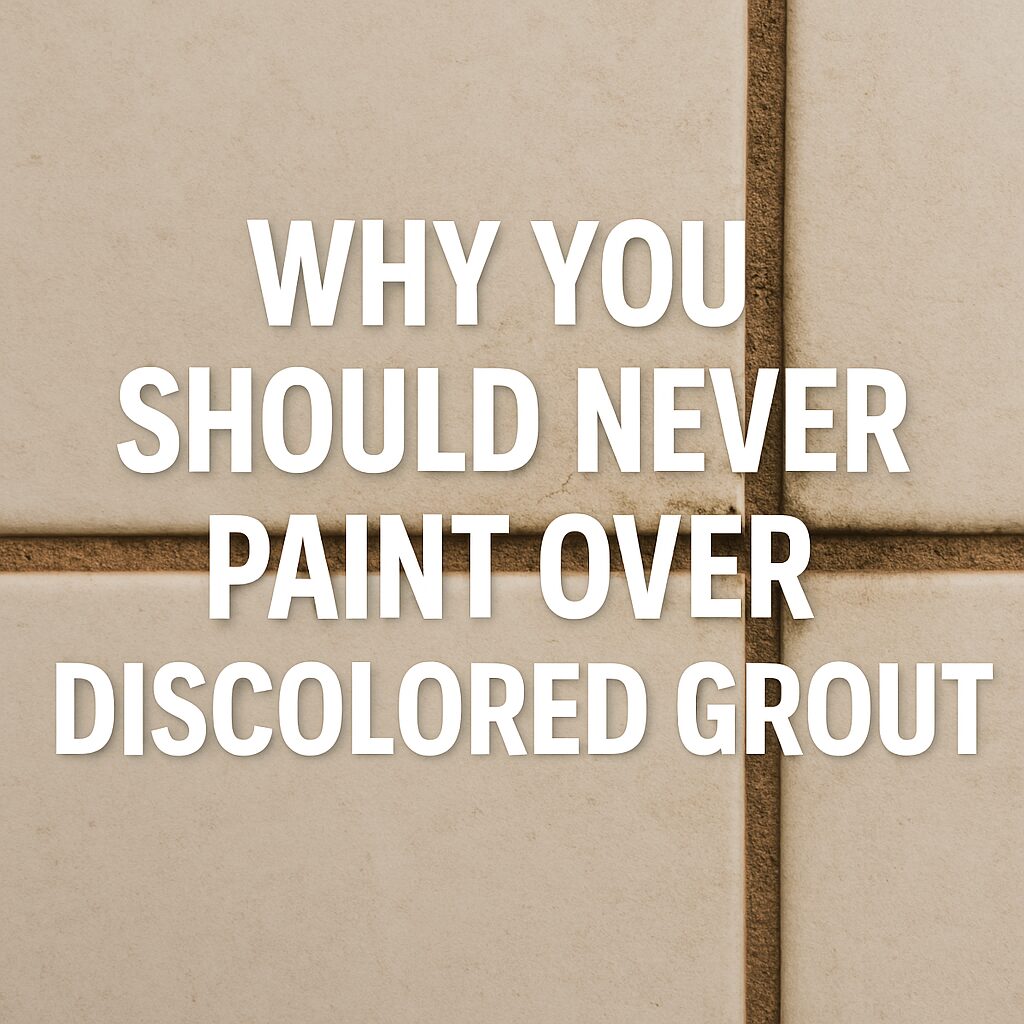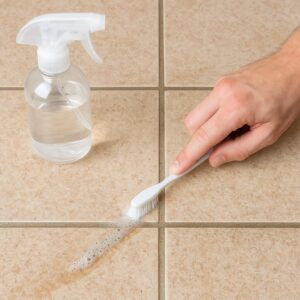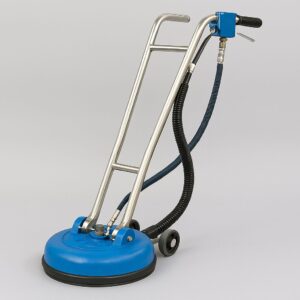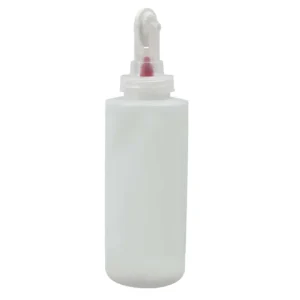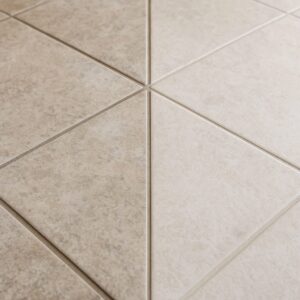Discolored grout is a common problem in many Phoenix homes. With high heat, dry air, and dust, grout tends to stain faster here than in cooler, wetter climates. Moreover, while it might seem tempting to simply paint over discolored grout, doing so often causes more harm than good.
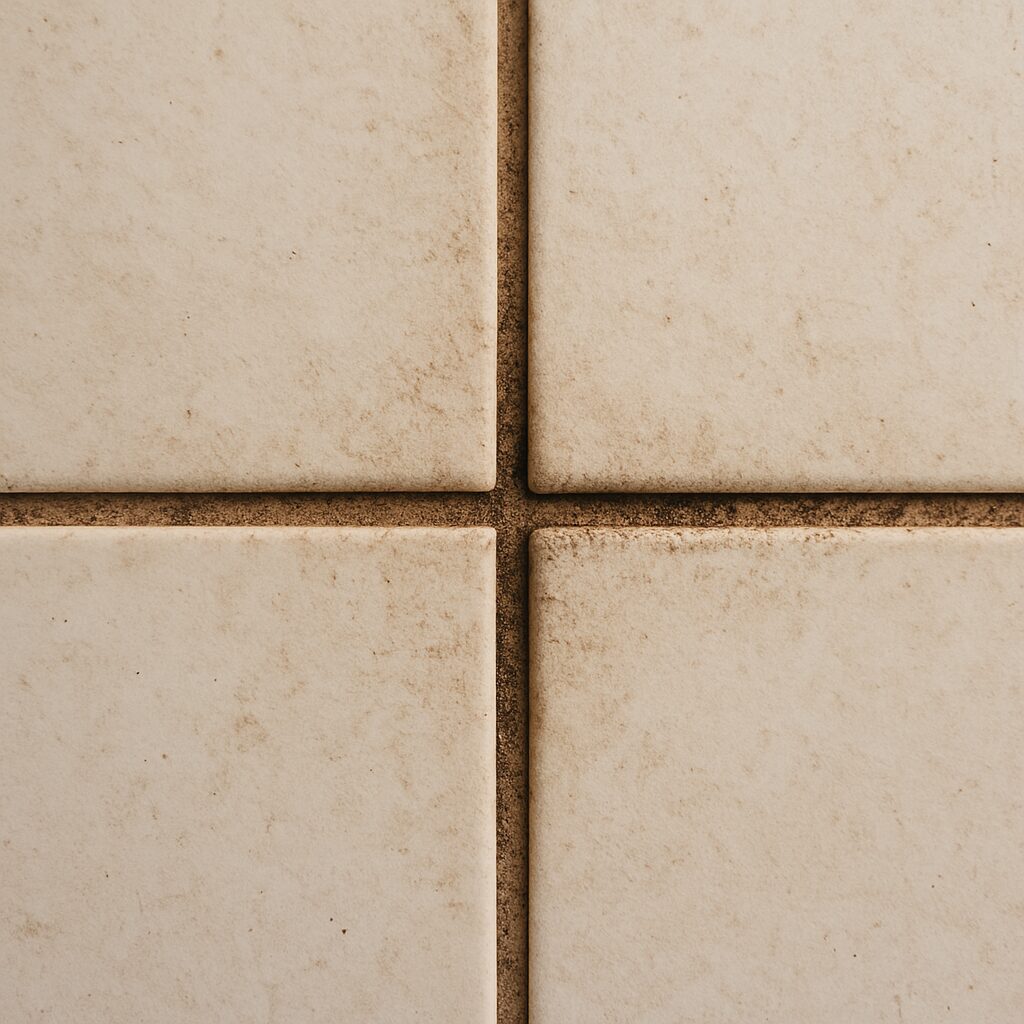
What Causes Discolored Grout in Phoenix?
Grout discoloration occurs when grout absorbs dirt, spills, mold, and minerals. In Phoenix, the desert climate makes this worse. Here’s why:
- Hard water contains minerals that leave behind white or brown stains.
- Dust and sand blow in from the desert, collecting on tile floors and sticking to grout.
- High temperatures cause frequent evaporation, concentrating stains.
- Heavy foot traffic in Phoenix homes wears down grout sealers faster than expected.
Even in well-maintained homes, discolored grout is hard to avoid. However, painting over it is not a solution—it’s a problem in disguise.
The Problem with Painting Over Discolored Grout
Painting grout seems like a fast fix. Just roll or brush on a matching color and make everything look new, right? Wrong.
Here are the main reasons why this quick fix backfires:
1. Paint Doesn’t Penetrate the Grout
Grout is porous. When you apply paint, it sits on top, rather than soaking in. This creates a thin layer that peels, cracks, or flakes under pressure. Especially in Phoenix homes where tile floors get hot, this problem appears faster.
2. Paint Traps Moisture and Bacteria
Discolored grout is usually stained due to moisture or mold. Painting over it traps that bacteria underneath. Over time, the bacteria can spread and damage not just the grout, but the tiles and subfloor too.
3. Paint Reduces Air Quality
Many grout paints release volatile organic compounds (VOCs). These chemicals are released into your indoor air during and after painting. In Phoenix’s dry climate, VOCs evaporate faster and hang around longer. That affects your indoor air quality and can cause health issues, especially for kids and pets.
4. Painted Grout is Hard to Clean
Painted grout attracts dust and dirt even more. Once it starts peeling, it traps debris in the cracks. Cleaning it becomes difficult and even unsafe if the underlying grout is moldy.
Why This Matters More in Phoenix Homes
Phoenix’s environment creates specific challenges:
- Tile is popular in Phoenix homes due to its heat resistance.
- Outdoor debris like sand and plant pollen constantly gets tracked inside.
- High UV exposure breaks down grout faster, especially near windows or outdoor entrances.
- Dry conditions don’t mean your grout is dry. Moisture still sneaks in from spills and cleaning.
When grout becomes discolored in Phoenix, it often signals a deeper issue—one that painting will never solve.
Better Alternatives to Painting Over Discolored Grout
Several effective, long-term solutions do more than just cover up the problem.
1. Deep Grout Cleaning
Professional grout cleaning removes stains, bacteria, and buildup without damaging the grout. This process usually includes:
- High-powered steam cleaning
- Eco-friendly chemical treatments
- Grout-safe brushes and tools
For Phoenix residents, using a service familiar with local grout conditions is essential. Local pros know how to deal with desert grime, calcium stains, and mold from evaporative coolers.
2. Grout Sealing
After cleaning, sealing your grout will help prevent future stains. A good grout sealer will:
- Protect against water and dirt
- Reduces discoloration over time
- Make cleaning easier
- Extend grout lifespan
For homes in Phoenix, reapplying a sealer every 1–2 years is a smart maintenance habit.
3. Grout Recoloring (The Right Way)
Instead of paint, professional-grade grout stain products (also called grout colorant) offer a long-lasting, safe way to recolor grout. These products:
- Penetrate deep into the grout
- Contains built-in sealers
- Resist cracking and peeling
- Are mold- and mildew-resistant
This method restores the color and adds a protective layer, without trapping dirt or damaging the tile.
4. Grout Replacement
If the grout is too far gone—cracked, crumbling, or mold-infested—removing and replacing it is the best option. While it may sound intimidating, experienced contractors can do this quickly and efficiently.
Phoenix homeowners should look for tile professionals familiar with local materials and tile styles. Many older homes use Mexican Saltillo or ceramic tile, both of which require careful handling.
How to Prevent Discolored Grout in Phoenix
A little care goes a long way. Here are some simple tips to keep grout looking fresh:
- Vacuum regularly to remove dust and sand
- Mop with a pH-neutral cleaner to avoid stripping the sealant
- Wipe spills quickly—especially coffee, juice, or pet messes
- Keep your home well-ventilated to reduce moisture buildup
- Schedule professional cleaning annually, especially after the monsoon season
When to Call a Professional
If your grout is discolored, sticky, or starting to smell, it’s time for expert help. Phoenix homeowners benefit from working with companies that specialize in desert-durable tile care.
A trained technician can assess your grout and recommend the best solution—whether it’s a deep clean, recoloring, or complete replacement. Don’t wait until the problem affects your indoor air or damages your flooring.
Discolored Grout Deserves More Than Paint
Discolored grout in Phoenix homes is more than a visual nuisance. It’s often a sign of hidden moisture, bacteria, or chemical breakdown. Painting over it may seem like a cheap solution, but it often leads to bigger problems.
Instead, choose long-term solutions that, in turn, restore, protect, and improve your tile surfaces. Whether it’s deep cleaning or, alternatively, professional grout staining, the right method will ultimately add value and beauty to your home, without shortcuts.
Restore Your Grout the Right Way
If you’re tired of discolored grout in your Phoenix home, don’t settle for paint. Get a quote for professional grout cleaning or recoloring from a local expert today. Your floors—and your air quality—deserve better.

